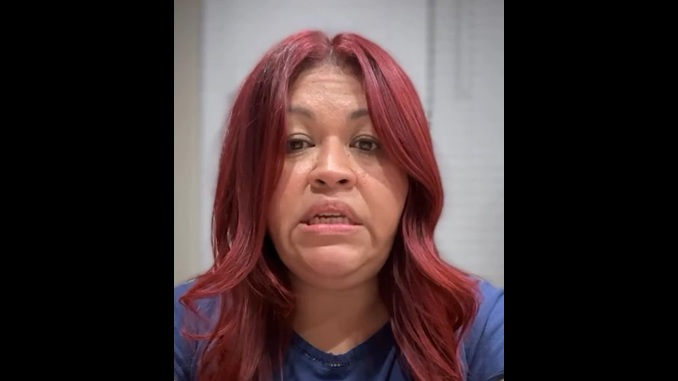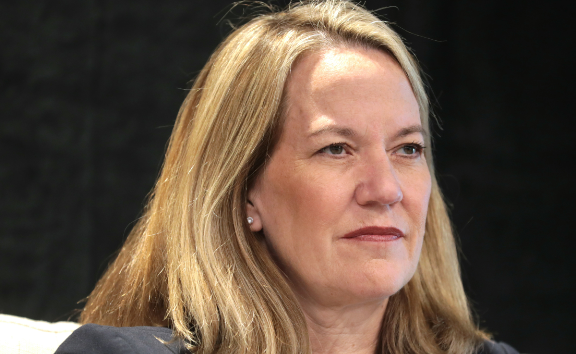
by Matthew Holloway | Aug 23, 2025 | Education, News
By Matthew Holloway |
Controversy has once again embroiled Arizona State University (ASU), threatening the credibility of the institution, Arizona PBS, and the Walter Cronkite School of Journalism. Emails uncovered by the Arizona Republic reveal that ASU President Michael Crow, former Arizona Republic publisher Mi-Ai Parrish, and other officials allegedly favored Democratic gubernatorial candidate Katie Hobbs over Republican Kari Lake during the 2022 Arizona gubernatorial election.
Lake has accused them of “collud[ing] to prevent me from having a debate forum.”
Reporting from the Arizona Republic’s Stacey Barchenger earlier this month exposed internal discussions among ASU leadership that appeared to prioritize Hobbs while sidelining Lake. The emails, obtained through public records requests, show that Parrish emailed Arizona PBS leaders, writing, “We may have issues,” after discussions with PBS Senior Director of Content, Ebonye Delaney. They expressed concerns about equal time laws and the risk to ASU’s relationship with the Arizona Citizens Clean Elections Commission.
Crow emailed Parrish, stating, “Whatever the format there remains the fact that it is our venue and brand. We need structure…and format…….and….people who believe in elections as participants.” He later instructed his chief of staff, James O’Brien, and Parrish to “make sure you are both on the same page here,” prompting Parrish to ask, “What outcome are you seeking?”
ASU offered Hobbs a solo interview on Arizona PBS, a move that severed the university’s long-standing partnership with the voter-approved Clean Elections Commission. This decision was influenced by Crow’s reported disagreement with Lake’s views on election integrity and his labeling her an “election denier.”
Barchenger’s report, citing expert opinions, stated “That ASU leaders would consider one candidate’s views, and then reach down and influence television programming, called into question Arizona PBS’ independence as a news organization and its autonomy from university influence, experts said.”
“And it could have risked legal repercussions for Arizona’s largest university, they added.”
The Arizona Republic’s Robert Anglen shared the findings on X, writing, “Newly released emails detail how ASU’s top leaders sought to muzzle Kari Lake in 2022 for her election-denial views and give preferential treatment to Katie Hobbs on Arizona PBS during the governor’s race.”
Lake rejected Arizona PBS’s offer of a 30-minute solo interview, insisting on a joint debate with Hobbs. She told reporters at the time, “If she doesn’t appear with me, they should kick her out. If Democrats don’t have to sit on the debate stage with the Republicans, if they can just stomp their feet and demand a safe space … then we’ll never have a debate system again.” Lake instead participated in a Clean Elections-sponsored interview on another station and vowed to avoid PBS-related events.
In a statement responding to the exposé, Lake said: “Taxpayer-funded Michael Crow and taxpayer-funded ASU, along with taxpayer-funded PBS, colluded to prevent me from having a debate forum for fear I would talk about election fraud, and because their chosen candidate Katie Hobbs would’ve been destroyed in a debate with me. They interfered in the 2022 Arizona Gubernatorial election and trampled on my First Amendment rights. Their actions were not just unethical; they were likely illegal, too.”
ASU spokesman Jay Thorne defended the university’s actions, however, stating, “The shared objective of ASU and Arizona PBS after the gubernatorial debate was cancelled was to provide a forum for the voters of Arizona to hear from the two candidates for Governor in an interview format. It was an opportunity provided under identical conditions to each candidate, and only one accepted the offer.”
The controversy has raised serious questions about Arizona PBS’s journalistic independence and ASU’s impartiality. Crow, who received a contract extension with a pay raise and bonuses in 2024 despite prior scandals, faces renewed scrutiny over allegations of partisan interference in the electoral process. The decision to prioritize one candidate’s platform over another has sparked outrage and could have lasting repercussions for the institutions involved. This rewritten version organizes the information into clear sections, eliminates redundancy, and enhances readability while preserving all original quotes.
The Arizona Free Enterprise Club (AZFEC) announced August 20th that it has filed a Hatch Act complaint against ASU “for using taxpayer-funded resources to meddle in the 2022 Governor’s race.”
Scot Mussi, President of AZFEC, stated, “This was a blatant misuse of taxpayer-funded university resources to tilt the scales of a gubernatorial election. Arizona law is clear: universities must remain impartial and neutral in election-related activities.”
Matthew Holloway is a senior reporter for AZ Free News. Follow him on X for his latest stories, or email tips to Matthew@azfreenews.com.

by Matthew Holloway | Aug 23, 2025 | News
By Matthew Holloway |
Congressman Eli Crane announced that the U.S. Small Business Administration (SBA), under President Trump, is offering low-interest federal disaster loans to help businesses, nonprofits, and tribal nations recover from the devastating 2025 wildfires. The loans respond to the Dragon Bravo and White Sage fires, which scorched the Northern Rim of the Grand Canyon and the Kaibab Plateau in Northern Arizona.
The federal disaster declaration, issued by the SBA on August 13th, covers the Arizona counties of Coconino, Gila, Mohave, Navajo, and Yavapai, as well as the tribal nations of the Navajo Nation, Hopi Tribe, Havasupai Tribe, Hualapai Tribe, and San Juan Southern Paiute Tribe.
According to a press release from the SBA, “The loan amount can be up to $2 million with interest rates as low as 4% for businesses and 3.625% for PNPs with terms up to 30 years. Interest does not accrue, and payments are not due until 12 months from the date of the first loan disbursement. The SBA sets loan amounts and terms based on each applicant’s financial condition.”
The administration clarified that the Economic Injury Disaster Loan (EIDL) is available to eligible businesses, small agricultural cooperatives, nurseries, and PNPs with financial losses directly related to the disaster. However, the administration noted it is “unable to provide disaster loans to agricultural producers, farmers, or ranchers, except for aquaculture enterprises.”
The SBA explained that the purpose of the loans is “for working capital needs caused by the disaster, and are available even if the business did not suffer any physical damage. They may be used to pay fixed debts, payroll, accounts payable, and other bills that could have been paid had the disaster not occurred.”
As of this report, the Dragon Bravo fire has burned over 145,000 acres and is 62% contained. It has cut a swath of destruction from the north rim of the Grand Canyon northward along both sides of Arizona State Route 67 for about 12 miles and then along the east side of the State Route for nearly another twenty miles, leaving a scar almost 16 miles wide at its widest point.
The White Sage fire has burned nearly 59,000 acres and is 95% contained after spreading in a widening eastward arc from White Sage flat through the Kaibab National Forest toward Coyote Valley.
In July, Governor Katie Hobbs met with Trump administration officials, including Secretary of the Interior Doug Burgum, to coordinate with federal authorities on the Dragon Bravo wildfire, days after Congressman Paul Gosar (R-AZ09) joined a growing bipartisan coalition of Arizona leaders calling for an investigation into it. The fire claimed the historic Grand Canyon Lodge along with 50-80 other structures in the area in mid-July.
For more information about the SBA EID loans or to apply, please click here, call SBA’s Customer Service Center at (800) 659-2955, or email disastercustomerservice@sba.gov.
Matthew Holloway is a senior reporter for AZ Free News. Follow him on X for his latest stories, or email tips to Matthew@azfreenews.com.

by Matthew Holloway | Aug 22, 2025 | News
By Matthew Holloway |
Social media commentator Chaya Raichik’s Libs of TikTok account is calling for charges against current Phoenix City Councilwoman and former Arizona State Senator Anna Hernandez (D) after she allegedly posted a warning threatening the security of U.S. Immigration and Customs Enforcement (ICE) agents and interfering with their legal operations.
In a now-deleted post, screen-captured by Libs of TikTok, Hernandez allegedly wrote, “ALERT/ALERTA” and provided an address in Phoenix where ICE Agents were observed to be operating, along with the main cross streets. She wrote, “ICE IS PRESENT/LA MIGRA ESTÁ PRESENTE” and provided a phone number for a “línea de Defensa” or line of defense, which traces back to the Puente Human Rights Movement, an illegal immigrant advocacy organization.
Libs of TikTok wrote, “Anna Hernandez (D), a Former Arizona State Senator and current Phoenix Councilwoman, made a post on her Instagram doxxing ICE’s live location. She’s interfering with ICE and helping criminal illegals evade arrest. Charge her.”
In a follow-up video post to the platform, Hernandez advised her followers to “resist by:”
- “Demanding transparency from our new police chief
- Forcing MCSO to cut ties with ICE
- Investing in care, not criminalization
- Protecting each other at the neighborhood level”
She wrote that President Donald Trump “federalized D.C.’s police — even though violent crime is at a 30-year low. He deployed the National Guard, swept through historically Black neighborhoods, and targeted residents experiencing homelessness.”
She then claimed, “We’re already seeing PPD violate the rights of unhoused people and put immigrants at risk of deportation. A Trump takeover of PPD would only escalate this violence.
As recently as May, Hernandez was organizing demonstrations against ICE at Arizona’s federal immigration court in Phoenix, writing, “ICE is back, making arrests at Phoenix courts. Community with safe status, it’s time to stand up and make our voices heard!”
The allegations against Hernandez came just days after Homeland Security Secretary Kristi Noem was forced to relocate her personal residence due to increased threats to her person and family, along with “vicious doxxing,” described by a Homeland Security spokesman to Fox News.
“Following the media’s publishing of the location of Secretary Noem’s Washington D.C. apartment, she has faced vicious doxxing on the dark web and a surge in death threats, including from the terrorist organizations, cartels, and criminal gangs that DHS targets. Due to threats and security concerns, she has been forced to temporarily stay in secure military housing,” Assistant Secretary Tricia McLaughlin said.
“Secretary Noem continues to pay rent for her Navy Yard residence,” she added. “It’s a shame that the media chooses sensationalism over the safety of people enforcing America’s laws to keep Americans safe.”
In July, ICE officers reported a massive increase in assaults, according to a memo sent by U.S. Homeland Security, with extremist groups targeting ICE personnel and their families through similar coordinated doxxing.
Matthew Holloway is a senior reporter for AZ Free News. Follow him on X for his latest stories, or email tips to Matthew@azfreenews.com.

by Matthew Holloway | Aug 21, 2025 | News
By Matthew Holloway |
A letter from Solicitor General of the United States D. John Sauer to the Speaker of the U.S. House of Representatives Mike Johnson has revealed that the Department of Justice is prepared to defend the removal of former Voice of America (VOA) Director Michael Abramowitz from his position. Abramowitz’s removal was ordered by Acting Chief Executive Officer of the U.S. Agency for Global Media (USAGM) Kari Lake.
The letter sets a clear argument that restrictions under 22 U.S.C. 6205(e)(l) against Abramowitz’s termination for cause under 5 U.S.C. § 7543, are rendered unconstitutional by Article II § 2 Clause 2.
Solicitor General Sauer explained the restriction against Abramowitz’s termination writing, “The head of Voice of America, an inferior executive officer, is appointed by the Chief Executive Officer of the United States Agency for Global Media. See 22 U.S.C. 6205(e)(l). A federal statute provides that the Chief Executive Officer may remove the head of Voice of America only with the approval of the Independent Broadcasting Advisory Board.”
The Solicitor General then laid out the legal position of the administration that the DOJ “will file in defense of the removal of Michael Abramowitz from that office.”
He wrote:
“Under Article II, inferior executive officers must be removable at will by the President or by a department head acting on the President’s behalf. See Seila Law LLC v. CFPB, 591 U.S. 197, 215 (2020).
“The Supreme Court has recognized only one narrow exception to that ‘general rule.’ Ibid. That exception extends, at most, to certain domestic inferior officers ‘with limited duties and no policymaking or administrative authority.’ Id. at 218.
“The head of Voice of America falls outside that exception. Among other things, he exercises significant policymaking or administrative authority in supervising Voice of America, and Voice of America’s activities implicate the President’s authority to manage foreign affairs.”
Sauer added that this opinion is supported by the precedent set in Seila Law LLC v. CFPB, 591 U.S. 197, 215 (2020) in which the Supreme Court ruling penned by Justice Robers is clear: “In our constitutional system, the executive power belongs to the President, and that power generally includes the ability to supervise and remove the agents who wield executive power in his stead. While we have previously upheld limits on the President’s removal authority in certain contexts, we decline to do so when it comes to principal officers who, acting alone, wield significant executive power. The Constitution requires that such officials remain dependent on the President, who in turn is accountable to the people.”
In short, it is the Solicitor General’s legal opinion that because of the unique, Congressionally-mandated duty of Voice of America to carry out foreign policy objectives and the significant authority the VOA Director has over them, the President and his appointed Acting Chief Executive Officer, Kari Lake, must have the power to appoint and remove personnel from the agency at will to satisfy the President’s duties under the Constitution as vested by Congress: “the Appointment of such inferior Officers, as they think proper, in the President alone, in the Courts of Law, or in the Heads of Departments.”
As previously reported by AZ Free News, Abramowitz was informed of his dismissal after he declined reassignment to the agency’s Edward R. Murrow Transmitting Station of the International Broadcasting Bureau in Greenville, NC, and that the USAGM maintains “the Chief Executive Officer, acting on the President’s behalf, may lawfully remove the Voice of America Director, an inferior officer.”
Matthew Holloway is a senior reporter for AZ Free News. Follow him on X for his latest stories, or email tips to Matthew@azfreenews.com.

by Matthew Holloway | Aug 19, 2025 | News
By Matthew Holloway |
Following a post on X mourning the reported buyouts of Arizona Republic writers and reporters, Arizona Democratic Attorney General Kris Mayes received a harsh rebuke for her participation in a 2000 stock trading scandal. Mayes acknowledged being a party in a 2003 article after resigning from the newspaper.
In her August 13th post, Mayes wrote, “The buyouts at the Arizona Republic are devastating. Losing legendary reporters like @maryjpitzl means less accountability and less transparency for the public. And it’s bad news for democracy. As a former Republic reporter it breaks my heart to see the state of the paper today.“
Brian Anderson, Founder of the Saguaro Group and Arizona Capitol Oversight, quoted the post from Mayes the following day. His post included a newspaper clipping dating to the 2003 Arizona Republic story that revealed Mayes’ participation in purchasing stock from Central Newspapers Inc. (CNI) shortly before the sale of the Arizona Republic to Gannett Co., Inc.. The stock trade netted the then-beat reporter approximately $5,000, according to Mayes.
Anderson wrote, “When @KrisMayes was a ‘journo’ at @azcentral, she was investigated for insider trading and then suddenly resigned.”
According to a 2022 article in the Republic, when the scandal came to light again in Mayes’ campaign for the AG Office, the Democrat defended the purchase of CNI stock. No charges against Mayes or the other nine members of the Republic newsroom were brought at the time.
However, as the Republic noted, a letter to readers in the newspaper in 2000 from then-Executive Editor Pam Johnson announced the scandal, informing readers that 10 of its “newsroom staff” were flagged by the company after purchasing CNI stock through their 401(k) accounts.
Johnson, who passed away at the age of 74 in 2021, openly chided her staffers, including Mayes, for violating the Republic’s ethics policy. She wrote, “Republic journalists should never attempt to gain from information the general public does not have access to.”
She told readers:
“In this case, we investigated all of those involved and concluded that no one had what securities regulators would consider ‘insider information.’ That is to say, they had no concrete evidence that the company was going to be put up for sale. And therefore, there were no legal implications. They acted on gossip. Still, they heard or saw things that the general public couldn’t.”
“Many of our staff members heard or saw those same things and did not act. As one said: ‘I didn’t know if it was illegal, but I knew it wasn’t right.’ We agree,” she added.
According to AZCentral, the punishments handed down in the incident included suspensions without pay for four supervisors and formal letters placed in the personnel files of six reporters, including Mayes. The Attorney General has maintained that her subsequent resignation was planned in advance so that she could attend law school.
Matthew Holloway is a senior reporter for AZ Free News. Follow him on X for his latest stories, or email tips to Matthew@azfreenews.com.





